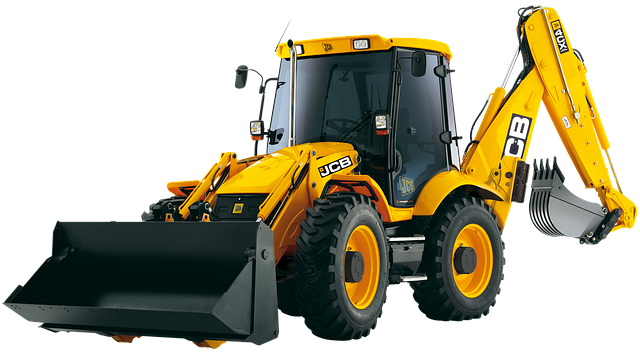Pressure-rated water heater tanks, designed for commercial and demanding residential settings, offer safety and reliability with robust construction, high pressure ratings, and compliance with ASME and NFPA standards. Made from durable materials like stainless steel or glass-lined steel, they incorporate overpressure relief valves and precise temperature controls to prevent leaks and explosions. With various capacities and energy-efficient options, these tanks prioritize performance and longevity while requiring regular maintenance, including inspections, flushing, and corrosion prevention, for optimal operation.
“Uncovering the secrets behind pressure-rated water heater tanks, this article explores how these innovative systems meet stringent safety standards. From understanding their basic functionality to delving into key features and maintenance practices, we dissect what makes high-pressure water heater tanks a game-changer in home plumbing. Discover how these tanks navigate strict regulations, ensuring longevity and peace of mind. Essential reading for anyone considering this advanced technology, specifically targeting improved water heater tank performance.”
- Understanding Pressure-Rated Water Heater Tanks
- Safety Standards and Regulations for Water Heater Tanks
- Key Features of High-Pressure Water Heater Tanks
- Maintenance and Longevity of Pressure-Rated Water Heater Tanks
Understanding Pressure-Rated Water Heater Tanks

Pressure-rated water heater tanks are designed to withstand elevated pressure levels, making them a safe and reliable option for various applications. These tanks differ from traditional water heaters in their ability to store hot water at higher pressures, typically ranging from 300 to 1000 psi (pounds per square inch). This enhanced pressure rating ensures efficient hot water delivery, especially in systems that require high-pressure outputs, such as in commercial buildings or areas with demanding hot water needs.
Understanding the working principle of these tanks is crucial. They incorporate robust construction techniques and materials to maintain structural integrity under intense pressure. This includes thick, reinforced steel shells, advanced welding procedures, and precise quality control measures. The tank’s capacity, usually measured in gallons, determines its storage volume, while the pressure rating guarantees safe operation at elevated pressures, ensuring consistent performance and longevity in even the most demanding residential water tanks or commercial water heating systems.
Safety Standards and Regulations for Water Heater Tanks

Water heater tank safety is governed by stringent regulations designed to ensure consumer protection and prevent accidents. These standards cover various aspects, from material composition and manufacturing processes to testing and certification. For instance, the American Society of Mechanical Engineers (ASME) sets detailed codes for pressure-rated water heaters, including those used in residential and commercial settings. These codes dictate the design, construction, and testing procedures to guarantee that hot water tanks can withstand internal pressure without failure.
When it comes to storage water heaters, whether gas tank heaters or electric tank heaters, compliance with safety standards is paramount. Regulatory bodies like the National Fire Protection Association (NFPA) provide guidelines for proper installation, maintenance, and use of these appliances. This includes regulations on tank capacity, ventilation requirements, and protection against potential hazards such as leaks, corrosion, and thermal expansion. Adhering to these safety measures not only protects users from physical harm but also ensures the longevity and efficient operation of hot water storage systems.
Key Features of High-Pressure Water Heater Tanks

Pressure-rated water heater tanks are designed with several key features that ensure safety and optimal performance in both residential and commercial settings. One of the primary considerations is their robust construction, typically made from high-quality materials like stainless steel or glass-lined steel, which withstand intense pressure and extreme temperatures. This construction not only enhances durability but also plays a crucial role in preventing leaks, ensuring the tank’s contents remain secure.
These tanks offer a range of advanced safety mechanisms, such as overpressure relief valves that automatically release excess pressure to prevent explosions. They are also equipped with temperature controls, allowing users to set desired hot water temperatures accurately. In terms of capacity, storage water heaters come in various sizes to accommodate different household needs, from small apartments to large families. Whether powered by gas tank heaters or electric tank heaters, these modern water storage systems represent a significant upgrade over traditional water heaters, offering energy efficiency and enhanced safety features.
Maintenance and Longevity of Pressure-Rated Water Heater Tanks

Proper maintenance is key to ensuring the longevity of pressure-rated water heater tanks. Regular inspections and flushing can prevent sediment buildup, which may reduce efficiency and lead to potential safety hazards. By checking for any signs of corrosion or damage, homeowners can catch issues early on. Additionally, using corrosion-inhibiting chemicals recommended by manufacturers can prolong the lifespan of these tanks, especially in areas with hard water.
Residential water tanks, whether gas tank heaters or electric tank heaters, require routine care to maintain optimal performance and safety standards. The tank capacity and hot water storage play a significant role in determining how frequently maintenance should be conducted. Homeowners using traditional water heaters should keep an eye on these aspects to guarantee their water heating systems remain efficient and reliable for years to come.
Pressure-rated water heater tanks, designed to withstand elevated pressures, are a cornerstone of modern plumbing safety. By adhering to stringent standards and regulations, these tanks ensure reliable hot water supply while safeguarding against potential hazards. Equipped with advanced features like robust construction, pressure relief mechanisms, and enhanced insulation, they offer superior performance and longevity. Proper maintenance, including regular inspections and timely repairs, is key to maximizing their service life, thereby promoting a safe and comfortable living environment.






